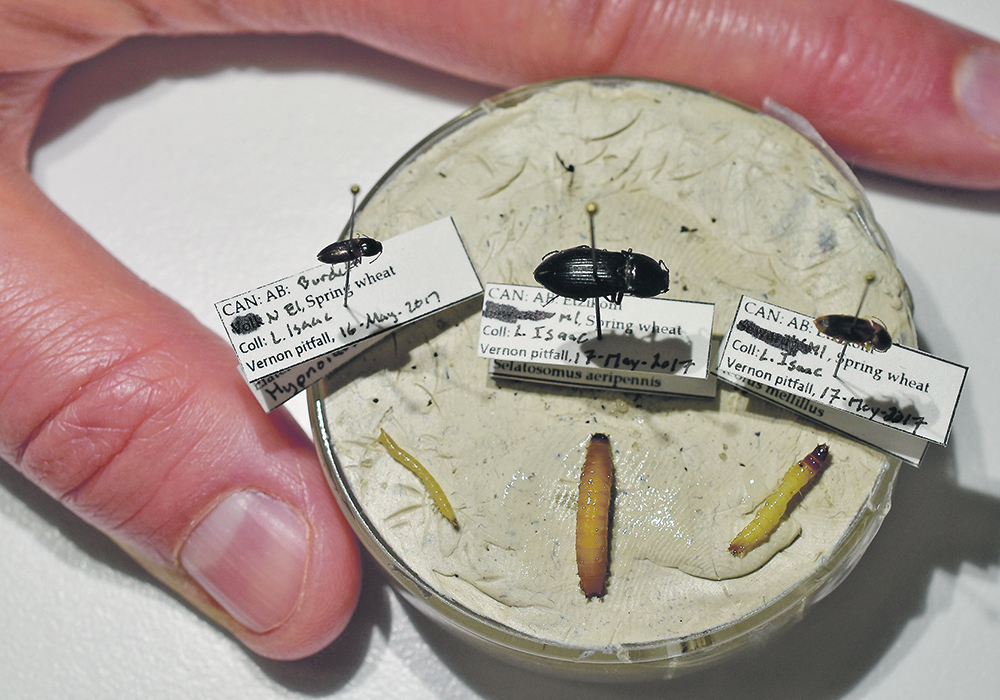Cereal growers in Alberta and Saskatchewan have a new tool to fight wireworms.
Health Canada’s Pest Management Regulatory Agency on Oct. 19, registered a new insecticide from BASF called Broflanilide.
BASF has been promoting Broflanilide for a while, but the registration means it will be available to Canadian farmers in 2021.
“Growers have struggled for years with wireworms in cereals… with available products deterring, rather than eliminating wireworms,” said Chris Hewitt of BASF Canada.
Wireworms, the larval stage of click beetles, like to feed on cereal crops during the early stages of the growing season and cause thinning of the crop or yellowing of the plant.
Read Also

Growing garlic by the thousands in Manitoba
Grower holds a planting party day every fall as a crowd gathers to help put 28,000 plants, and sometimes more, into theground
“They come up close to the soil surface and they’re detecting anything that produces CO2. (That’s) what germinating seeds produce,” said Haley Catton, cereal crop entomologist with Agriculture Canada in Lethbridge. “A very young, young plant, or even a seed that’s just germinating, is very vulnerable to death with just a few bite marks in the right place.”
Many farmers in the light brown soil zones in southern Alberta and southwestern Saskatchewan need something to kill wireworms because populations have been building in the soil.
Growers have been relying on neonicotinoid seed treatments to control wireworms in wheat and other crops. But neonics don’t kill the pest. It makes them dormant but the wireworms are able to recover.
Rotating crops away from cereals isn’t a great strategy because wireworms persist in the soil, as they will feed on pulses and probably feed on canola.
“Unlike some other insects, it’s really hard to subdue them with rotation,” Catton said.
On cereal crops, Broflanilide will be branded as Teraxxa F4. It will be sold as a fungicide and insecticide seed treatment.
For potatoes, the new insecticide is called Cimegra. It can be used to control chewing insects in potatoes and corn.


















